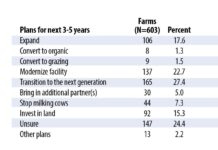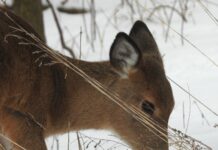A good book can make or break a summer vacation. Whether under a beach umbrella or in a comfortable easy chair, any curious naturalist will enjoy these recent titles.
Winged Obsession: The Pursuit of the World’s Most Notorious Butterfly Smuggler (2011, William Morrow, $25.99) is the latest book by Jessica Speart. For more than decade, Speart wrote a series of what I’ve called wildlife mystery thrillers featuring her heroine, federal wildlife agent Rachel Porter. Porter’s exploits focused on catching bad guys dealing in endangered species.
Speart has taken the expertise she picked up researching fictional stories to slide into a riveting nonfiction account of how a rookie U.S. Fish and Wildlife Service agent, Ed Newcomer, goes undercover to catch Yoshi Kojima, the world’s most infamous butterfly smuggler.
If this story wasn’t true, it would make a great Rachel Porter mystery. But the illegal butterfly trade is big business. Some rare butterflies can sell for $39,000 each, and the U.S. Fish and Wildlife Service estimates the illegal butterfly trade to worth $200 million per year.
Winged Obsession is a page turner, a real beach read.
The Nesting Season: Cuckoos, Cuckolds, and the Invention of Monogamy by Bernd Heinrich (2010, Harvard University Press, $29.95) is the latest master work by one of my favorite nature writers. The Nesting Season digs deeply into the biology of nesting birds, from monogamy and polygyny to polyandry and cuckoldry. Replete with many color illustrations, Heinrich’s latest book answers many of the questions I get this time of year.
Feathers: The Evolution of a Natural Miracle by Thor Hanson (2011, Basic Books, $25.99) is a terrific natural history of the one anatomical structure that is unique to birds. Feathers protect birds’ bodies, enable them to fly, and keep them warm and cool.
This book details how and why feathers came to be. It also describes the roles feathers have played in the lives of humans throughout history. Even today, feather factories process as much as 200,000 pounds of feathers every month (mostly from China) for use in pillow, parkas, and fly fishing lures.
Avian Architecture: How Birds Design, Engineer & Build by Peter Goodfellow (2011, Princeton University Press, $27.95) is a compelling read. I couldn’t put it down.
Goodfellow organizes nests into general types — scrapes, holes, platforms, cups, woven nests, and so on. He describes each nest type in great detail and illustrates the process with detailed artwork and photos. And for each nest type he includes several case studies of individual species.
For example, eastern meadowlarks represent dome nest builders, while Adelie penguins represent the mound builders. And you’ll learn the how edible-nest swiftlets use saliva to build the main ingredient in the Asian delicacy, bird’s nest soup.
Cricket Radio: Tuning in the Night-singing Insects by John Himmelman (2011, Harvard University Press, $22.95) hooked me with the title. I knew of Himmelman from an earlier book, Guide to Night-singing Insects of the Northeast (2009), so I was intrigued.
A friend’s 7-year old son was having trouble falling asleep at night. His father, a naturalist, thought singing insects would make the perfect lullaby. He and his son ventured into the backyard at night and captured katydids and crickets and placed them in a well-equipped container in the boy’s bedroom. And the boy fell asleep to the sounds of Cricket Radio.
Himmelman examines how the roots of Cricket Radio reach back to ancient China, and he describes the natural history of katydids and crickets.
Salt Marsh Diary: A Year on the Connecticut Coast by Mark Seth Lender (2011, St. Martin’s Press, $19.99) is for everyone who vacations along an East Coast shoreline. Lender lives on the edge of a salt marsh, one of the most biologically productive habitats on earth. Join him as he introduces his world, season by season.
Finally, Cheery: The True Adventures of a Chiricahua Leopard Frog by Elizabeth Davidson (2011, Five Star Publications, $15.95) targets first through fourth grade readers. It’s the story of how an uncommon species can be driven to the brink of extinction. It helps young readers understand the ecological problems facing amphibians all around the world.
And though short and simple, Cheery’s lessons are important for teachers and parents, too.












